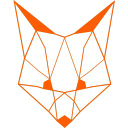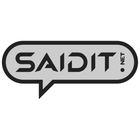
Phuks
Phuks is a decentralized, community-driven social networking platform built on blockchain technology, emphasizing free speech and anti-censorship. It integrates features of traditional social media, forums, and news aggregators, aiming to create a highly distributed and independent online experience where users control their content and interactions, moving away from centralized control.
About Phuks
Phuks represents a significant departure from conventional centralized social media platforms, offering a robust, decentralized ecosystem built on blockchain principles. This innovative approach aims to empower users by providing a censorship-resistant and community-driven environment.
Key aspects that define Phuks include:
- Decentralized Architecture: Unlike platforms where data and control reside with a single entity, Phuks leverages a peer-to-peer (P2P) network and distributed ledger technology. This ensures resilience against single points of failure and provides inherent resistance to external censorship or data manipulation. Your content is truly yours, distributed across the network rather than stored on a single server.
- Free Speech and Anti-Censorship: At its core, Phuks is designed to uphold free speech. The decentralized nature makes it incredibly difficult for any single authority to arbitrarily remove content or ban users. This commitment fosters an environment where diverse opinions and discussions can thrive without fear of ideological suppression.
- Community-Driven Governance: The platform encourages a community-centric approach. While specific governance models may evolve, the emphasis is on user participation in shaping the platform's future. This empowers the community to define standards and direct development, ensuring the platform remains aligned with user interests rather than corporate agendas.
- Monetization Opportunities: Phuks explores various avenues for content creators to monetize their contributions, potentially leveraging cryptocurrency and blockchain incentives. This creates an economic model that can directly reward users for their engagement and valuable content, fostering a sustainable ecosystem for creators.
- Rich Interaction Features: Beyond basic posting, Phuks incorporates a comprehensive suite of interaction tools. Users can engage in real-time chat, participate in structured forums, and utilize a built-in commenting system for in-depth discussions. Features like in-app voting allow the community to moderate content and curate valuable information effectively.
- Content Discovery and Organization: To combat information overload, Phuks includes features for news aggregation and content filtering. Users can organize and discover content using topic tags, making it easier to follow specific interests. The platform also aims for a clean and intuitive design, ensuring a seamless user experience despite its complex underlying technology.
- Privacy and Data Ownership: With decentralization comes enhanced privacy. User data is not centrally collected or controlled, significantly reducing the risk of mass data breaches or unauthorized surveillance. Users maintain greater ownership and control over their digital footprint.
Phuks is not just a social network; it's a foundational step towards a more autonomous and user-controlled internet, blending the best aspects of social interaction with the robust security and freedom offered by blockchain and distributed technologies.
Pros & Cons
Pros
- Strong emphasis on free speech and anti-censorship due to decentralized architecture.
- User-owned data and enhanced privacy by avoiding central data storage.
- Community-driven governance fosters a more democratic and user-aligned platform.
- Potential for content monetization leveraging cryptocurrency, benefiting creators directly.
- Resilient and resistant to single points of failure or external shutdowns.
- Clean design with features like night mode enhance user experience.
Cons
- Potential scalability challenges inherent in decentralized and blockchain-based systems.
- Larger learning curve for users unfamiliar with decentralized technologies and cryptocurrency.
- Content moderation in a truly free-speech environment can be complex and contentious.
- User adoption may be slow against established, centralized social media giants.
- Performance could be subject to network latency and user node participation.
What Makes Phuks Stand Out
True Decentralization and P2P Network
Operates on a fully distributed network, eliminating central points of control and enhancing censorship resistance and data ownership.
Unwavering Free Speech Commitment
Its architectural design inherently protects user expression, making it a haven for uncensored discussion and diverse viewpoints.
Blockchain-Powered Monetization
Offers innovative ways for content creators to monetize directly, fostering a sustainable ecosystem independent of traditional advertising models.
Community-Driven and Independent
Empowers users to collectively shape the platform's future, ensuring its direction aligns with the community's interests rather than corporate mandates.
Features & Capabilities
12 featuresExpert Review
Phuks: A Deep Dive into the Decentralized Social Frontier
Phuks emerges as a noteworthy contender in the evolving landscape of social networking, specifically targeting users disillusioned with centralized platforms and their associated issues of censorship, data privacy, and corporate control. The platform's commitment to decentralization via blockchain technology is its most defining characteristic, promising a fundamentally different and, arguably, more empowering user experience.
Architectural Philosophy and Performance
At its core, Phuks aims to be a truly distributed system. This P2P network approach is designed to eliminate single points of failure, making it incredibly resilient to external pressures, be it government censorship or corporate shutdowns. From a technical standpoint, this distributed nature also implies greater data security, as user information is not consolidated in easily exploitable central servers. Performance, especially concerning content loading and real-time interactions, can often be a challenge for decentralized applications. While specific benchmarks are user-dependent, the underlying architecture suggests that network latency and user node health could influence the overall responsiveness. However, for a user valuing autonomy above raw speed, this trade-off is often acceptable.
User Experience and Interface Design
The platform emphasizes a 'clean design,' which is a crucial element for any social network. A cluttered or unintuitive interface can quickly deter users, especially when the underlying technology is complex. Phuks strives for a user experience that is familiar enough to ease the transition from mainstream platforms, yet distinct enough to highlight its unique advantages. The inclusion of a 'Night Mode/Dark Theme' indicates an attention to user comfort and prolonged engagement. Navigation, content discovery, and interaction flows are streamlined to ensure that participating in discussions, sharing content, or aggregating news remains straightforward. The built-in commenting system and in-app voting mechanisms are well-integrated, providing robust tools for community interaction and content curation.
Community and Content Dynamics
The 'community-based' and 'independent' claims are central to Phuks' value proposition. Unlike platforms where content policies are dictated from above, Phuks aims for a self-governed model. This implies that the community itself will largely shape the norms, content guidelines, and overall culture of the platform through mechanisms like in-app voting and forum discussions. This fosters a highly engaged and self-regulating environment. The 'news aggregator' and 'content filtering' features are essential for managing the potentially vast and diverse content streams that a decentralized, free-speech platform can generate. 'Topic tags' further aid in content organization and discovery, allowing users to quickly find and follow discussions relevant to their interests.
Unique Selling Points and Future Potential
The core 'unique selling points' revolve around its 'anticensorship,' 'free speech,' and 'decentralized' nature. These are not merely buzzwords but foundational principles embedded in its technical architecture. For individuals and communities living under restrictive regimes or those simply wary of increasing internet censorship, Phuks offers a compelling alternative. The mention of 'monetization' and 'cryptocurrency' integration points towards an innovative economic model, potentially moving beyond reliance on advertising. This can empower content creators and users, rewarding participation and valuable contributions directly. The 'IFTTT integration' suggests a forward-thinking approach to interoperability, allowing users to connect Phuks with other services and automate workflows, enhancing its utility beyond a standalone social network.
Challenges and Considerations
While the vision is compelling, decentralized platforms face inherent challenges. User adoption is crucial, and attracting a critical mass requires overcoming the network effect advantage of established giants. Scalability, a common hurdle for blockchain-based applications, needs robust solutions to handle potential massive user bases and high transaction volumes without compromising speed or stability. Moderation in a truly decentralized, free-speech environment presents a complex dilemma; while censorship is minimized, mechanisms must exist to address genuinely harmful or illegal content without compromising the core principles. The learning curve for new users, especially those unfamiliar with blockchain concepts, could also be a barrier, though a clean UI can mitigate this. Overall, Phuks presents a powerful vision for a more free and user-controlled internet experience, provided it can successfully navigate the technical and community governance complexities of decentralization.






